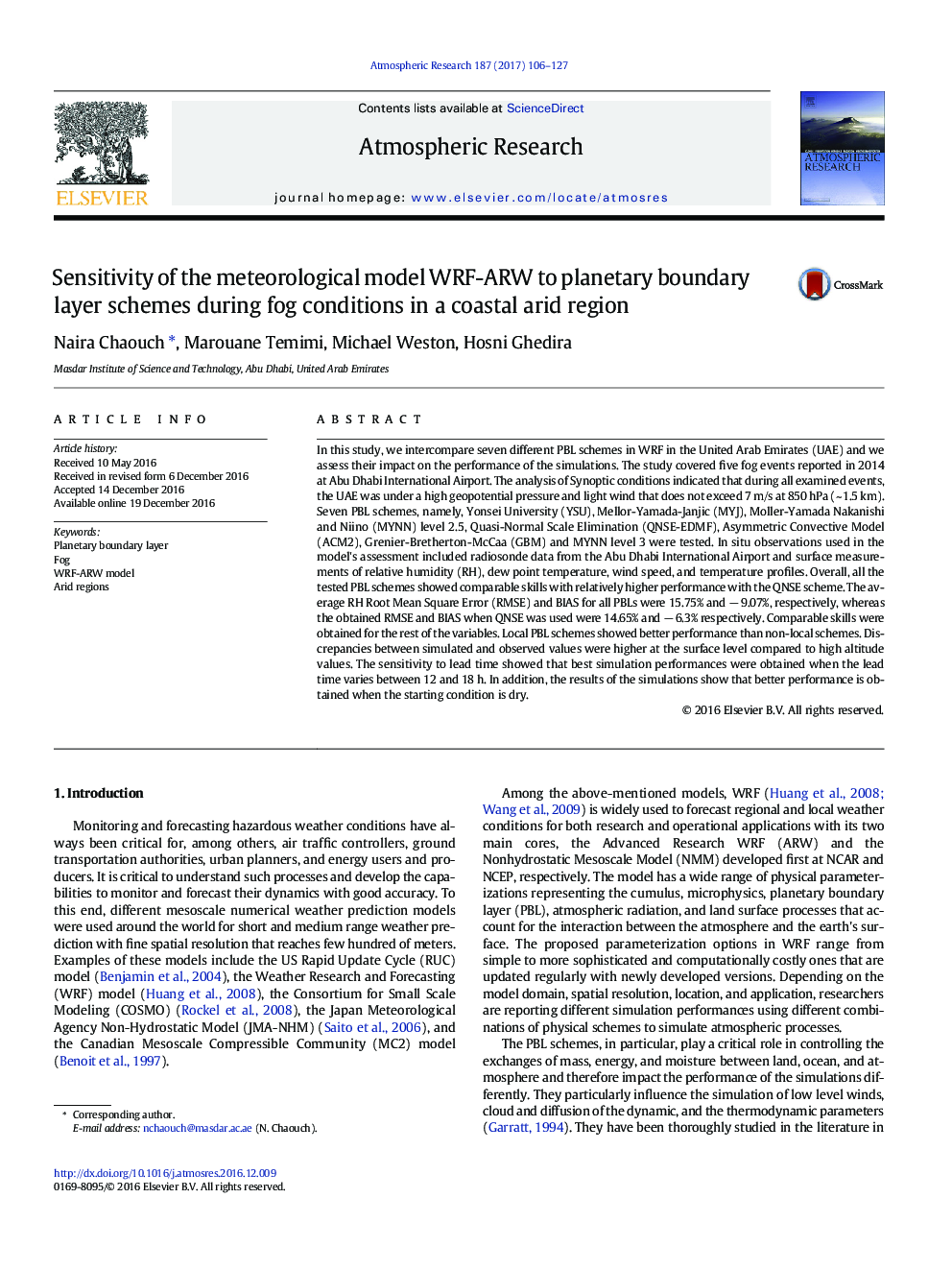| Article ID | Journal | Published Year | Pages | File Type |
|---|---|---|---|---|
| 5753718 | Atmospheric Research | 2017 | 22 Pages |
â¢Local PBL schemes outperform non-local PBL schemes during fog conditions.â¢The QNSE_EDMF/scheme shows the best performance to simulate meteorological variables during fog events.â¢Lead time varying between 12 and 18 h shows the best simulation performances.
In this study, we intercompare seven different PBL schemes in WRF in the United Arab Emirates (UAE) and we assess their impact on the performance of the simulations. The study covered five fog events reported in 2014 at Abu Dhabi International Airport. The analysis of Synoptic conditions indicated that during all examined events, the UAE was under a high geopotential pressure and light wind that does not exceed 7 m/s at 850 hPa (~ 1.5 km). Seven PBL schemes, namely, Yonsei University (YSU), Mellor-Yamada-Janjic (MYJ), Moller-Yamada Nakanishi and Niino (MYNN) level 2.5, Quasi-Normal Scale Elimination (QNSE-EDMF), Asymmetric Convective Model (ACM2), Grenier-Bretherton-McCaa (GBM) and MYNN level 3 were tested. In situ observations used in the model's assessment included radiosonde data from the Abu Dhabi International Airport and surface measurements of relative humidity (RH), dew point temperature, wind speed, and temperature profiles. Overall, all the tested PBL schemes showed comparable skills with relatively higher performance with the QNSE scheme. The average RH Root Mean Square Error (RMSE) and BIAS for all PBLs were 15.75% and â 9.07%, respectively, whereas the obtained RMSE and BIAS when QNSE was used were 14.65% and â 6.3% respectively. Comparable skills were obtained for the rest of the variables. Local PBL schemes showed better performance than non-local schemes. Discrepancies between simulated and observed values were higher at the surface level compared to high altitude values. The sensitivity to lead time showed that best simulation performances were obtained when the lead time varies between 12 and 18 h. In addition, the results of the simulations show that better performance is obtained when the starting condition is dry.
